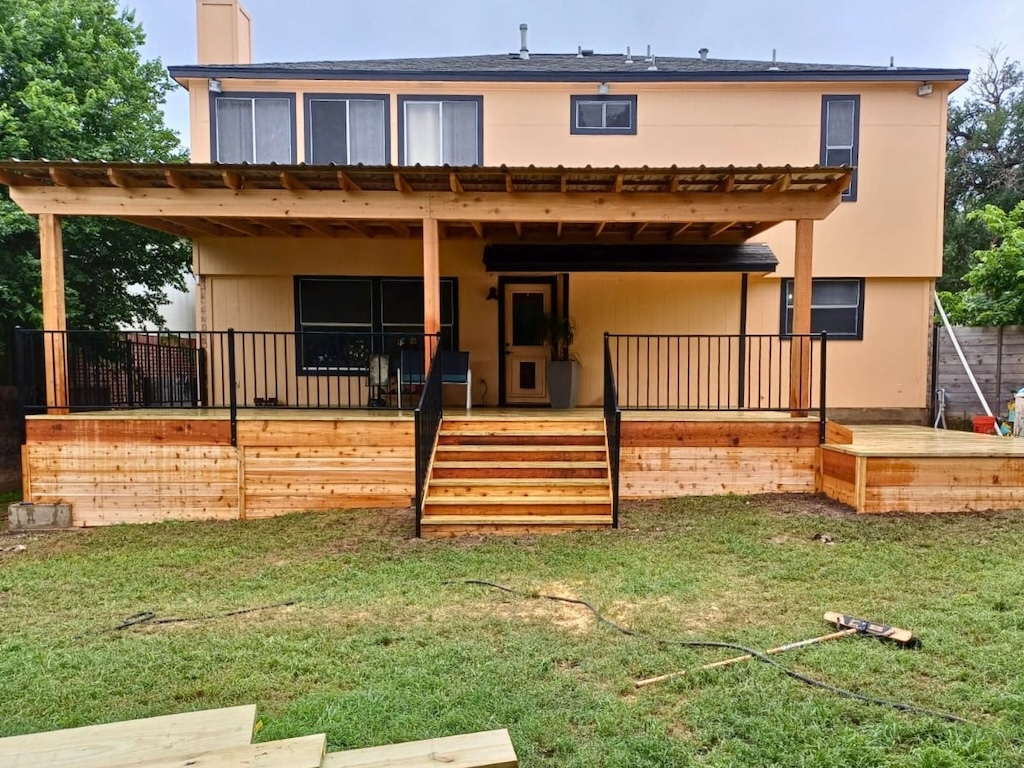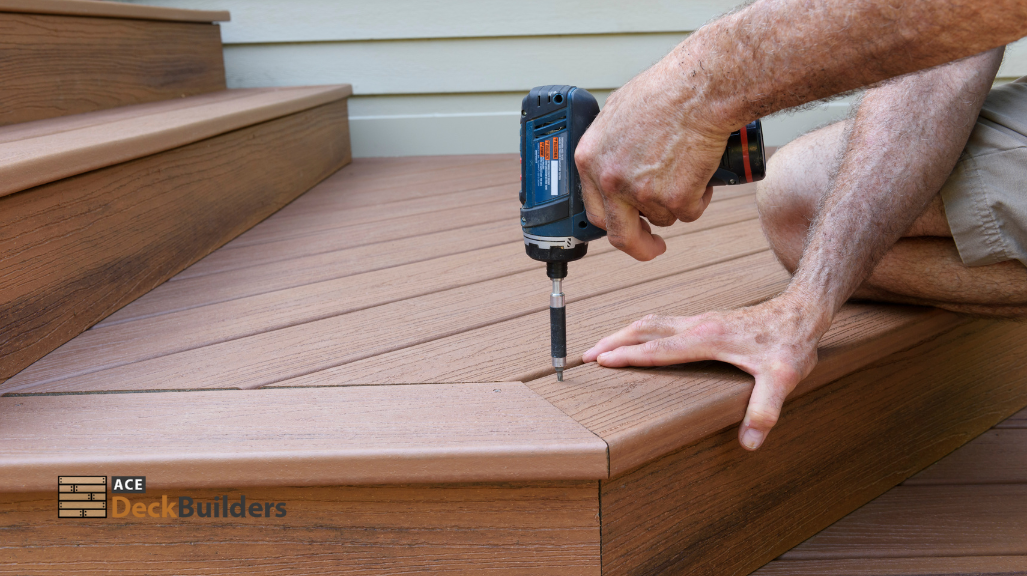TL;DR
The most significant savings for Austin decks come from smart scope (size discipline, simpler rails/stairs), material choices (light-tone value composites or well-planned cedar), and designing to standard lengths to reduce waste. Protect your budget with inspection-ready details, itemized estimates, and milestone billing. Maintain wood on a schedule or repair targeted issues to extend life before a complete rebuild. For a benchmark on process and craftsmanship local to Central Texas, consider consulting some reputable deck builders.
Table of Contents
ToggleWhy “Affordable” Means Smarter, Not Cheaper

In Austin, “cheap” often becomes expensive later: rework after failed inspections, hot surfaces no one uses, or maintenance cycles you can’t keep up with. “Affordable” means priority-driven design: spend where comfort and safety live (structure, rails, shade), and simplify everything else. It also means choosing a team that writes the plan for your outdoor spaces —drawings, inspection milestones, itemized scope—so the number you sign matches the deck you get.
Austin realities you can’t ignore:
- Heat/UV: color and texture affect comfort; shade is a bigger upgrade than most “premium” board features.
- Storm bursts: drainage and ventilation matter; clogged, airtight skirting is a false economy.
- Inspection gates: footing → framing → final. Miss prep, lose days, spend more.
Budget Levers That Move the Needle
You control more than you think. Pull these levers first:
1) Right-size the footprint
Most families live in one primary zone (a table/chairs + a grill or a lounge). That area is usually 180–260 sq. ft. Shrink everything else. A smaller, better-finished deck beats a big, bland rectangle you can’t afford to shade or rail properly.
2) Trim rail footage (or simplify the style)
Rails often rival decking costs. Fewer edges = fewer linear feet of rail. If your site allows, push one edge to grade with wide steps or a built-in bench that doubles as a soft boundary, especially if you’re considering composite decking .
3) Consolidate to one stair run
Each additional run adds layout, blocking, code checks, and rail. One well-placed flight with a sturdy landing during deck installation saves hundreds to thousands of dollars.
4) Design to 12/16/20-ft board lengths
Nudging a dimension by a few inches to align with standard board sizes reduces waste and labor. It’s invisible to the eye and golden for the budget.
5) Phase the “wants”
Wire for future lighting, but trim the fixture count now. Prep posts for a future pergola but install the canopy next season. Phase privacy screens after you’ve lived with the space.
Material Paths That Balance Cost, Comfort & Upkeep
Think in 10-year terms, not just day one.
Value Path: Pressure-Treated Pine (or Budget Softwood)
- Why it’s affordable: lowest upfront cost; easy sourcing and cutting.
- Austin musts: seal end-cuts; corrosion-resistant fasteners; maintenance every 12–24 months.
- Save smart: choose a lighter stain to keep surfaces cooler and hide dust/pollen.
Mid-Value Path: Western Red Cedar
- Why it’s sensible: cooler underfoot than dark synthetics; classic look.
- Tradeoff: consistent stain/seal cadence.
- Pro move: pair cedar with a compact, targeted shade zone instead of upgrading every board—comfort per dollar is higher.
Low-Maintenance Value: Entry/Mid-Tier Capped Composites (Light Tones)
- Why it fits budgets: not the premium line, but durable cap + rinse-and-go routine.
- Austin tip: pick light colors and matte textures to keep temps down; follow gapping/ventilation rules so warranties stick.
- Budget trick: use a mid-line field with a narrow picture-frame border for a “premium” look.
Premium-Look Without Premium Price: Mix & Match
- Value field boards + upgraded rail cap for touch comfort
- Simple picket rails + premium border
- Composite field + cedar bench to add warmth affordably
Rails, Stairs & Skirting: Where Budgets Go to Die
Rails
- Pickets are the value hero—classic, clean, code-friendly.
- Cable/glass is stunning but hardware- and labor-heavy. If views matter, reserve premium rail for the view edge and use pickets elsewhere.
Stairs
- Combine multiple tiny drops into one purposeful stair with a landing. It’s safer, looks intentional, and costs less.
Skirting & Fascia
- Full wraps on all sides are pricey. Face the public sides, ventilate low decks, and keep the house-side simple. Ventilation isn’t optional—it protects framing and reduces surface heat.
Design for Fewer Mistakes (and Fewer Change Orders)
Affordable projects die by a thousand clarifications. Solve it up front, especially when it comes to anticipated deck repairs :
- Plan view with dimensions and the stair/rail diagram.
- Detail sheet for ledger flashing, post bases, joist spacing, and rail post blocking.
- Allowances for rock excavation/extra piers/hidden rot—unit priced so surprises don’t turn into blank checks.
- Milestone billing is tied to permit approval, material delivery, framing inspection pass, and substantial completion.
- Schedule with inspection hold points (footing → framing → final) and weather buffers.
Save Now vs. Pay Later: Maintenance & Repairs

If the structure is decent, two low-cost moves can extend life before you rebuild:
- A targeted hardware refresh & reinforcement (hangers, bolts, post bases) plus safety fixes on rails/stairs.
- A disciplined clean + stain cycle that protects wood from UV and moisture.
When issues are localized—one bad stringer, a handful of rotted board ends—a focused repair restores safety at a fraction of the cost of replacement. For larger punch lists related to an existing deck , weigh the 10-year cost honestly: repeated repairs can cost more than a practical rebuild.
If your deck is basically sound but needs a tune-up, see how a pro scopes structural triage in deck repair in Austin.
For wood owners who want to stretch the lifespan without constant hassles, map a realistic finishing cadence with quality materials for deck staining in Austin.
Where should your budget land for a new deck vs. a refresh? A clear, local breakdown of how much it costs to build a deck in Austin helps you set expectations before you pick materials.
Small-Yard & Sloped-Lot Solutions That Don’t Break the Bank
Tight lots
- Go wider than deep; it feels spacious near the door and keeps rail length down.
- Use built-in benching along one edge to skip some rail footage.
Sloped yards
- Choose two levels instead of many; one stair run between them.
- Keep the upper level compact (closest to the door) and the lower level simple (no fussy corners).
Pool adjacency
- PVC or light-tone composite with stainless hardware near splash zones.
- Limit rail runs; replace some edges with extra-wide steps to the pool deck.
HOA realities
- Submit exact series names and a modest elevation sketch the first time—fewer re-submittals = faster, cheaper projects.
Sample Specs for Three Budgets (Copy These)
Budget A: “Start Smart” (~200–240 sq. ft.)
- Board: Entry composite, light tone, matte embossing
- Layout: Single-level rectangle, 12×18 or 12×20, one stair
- Rail: Pickets on two sides; wide steps form an open edge on the third
- Details: Picture-frame border (single board), ventilated skirting on the public side only
- Why it’s affordable: Minimizes rails and waste; comfort without premium frills
Budget B: “Balanced Upgrade” (~260–320 sq. ft.)
- Board: Cedar field with maintenance plan or mid-line composite
- Layout: Split-level (½-step) to separate the grill and the lounge
- Rail: Pickets everywhere; upgrade rail cap where hands rest
- Shade: Compact pergola over lounge zone
- Why it’s affordable: Shade + cap comfort beats expensive field boards
Budget C: “Small, Premium Feel” (~180–220 sq. ft.)
- Board: Mid-line composite field + premium border
- Layout: Single-level with diagonal field (joist spacing adjusted per spec)
- Rail: Pickets, but a short view edge in cable for drama
- Details: Divider board to control gaps; minimal skirting, fully ventilated
- Why it’s affordable: Premium look targeted where you see/touch it
FAQs
Rail length and type. Consolidate stairs and use pickets except where views demand cable/glass.
Yes. In the Austin sun, color and texture often matter more than the brand family. Light tones + matte textures + targeted shade in your outdoor living space = comfort.
No. Failed inspections and rework cost more than compliant drawings and first-pass approvals. Affordable projects are built around inspection hold points.
Only if the frame meets current span/spacing tables, has a properly flashed ledger, and posts sit on proper bases. Otherwise, you risk spending twice.
A small shade zone, a cool rail cap, and a clean border. Those are felt and seen daily.
Get an Austin-Ready Budget Plan
Want a deck that stays within budget and feels excellent in August? Start with a free deck estimate in Austin. We’ll right-size the footprint for composite decks , pick a materials lane, minimize rail/stair spend, and hand you an itemized, inspection-ready plan you can trust.
